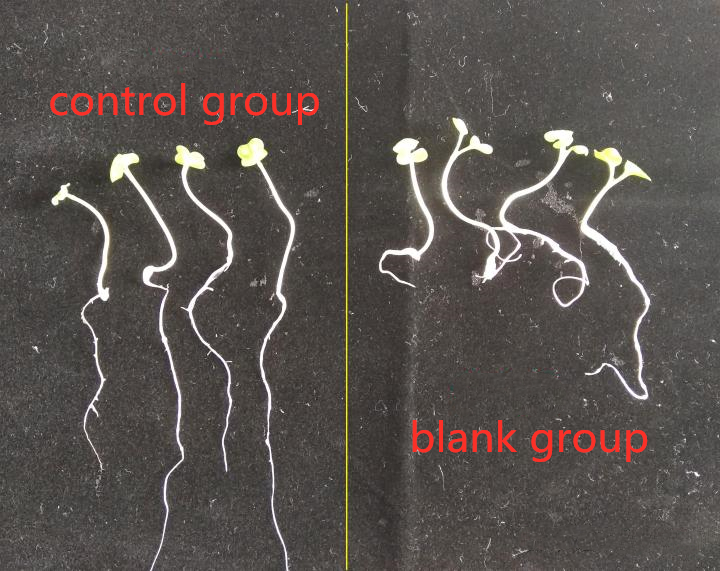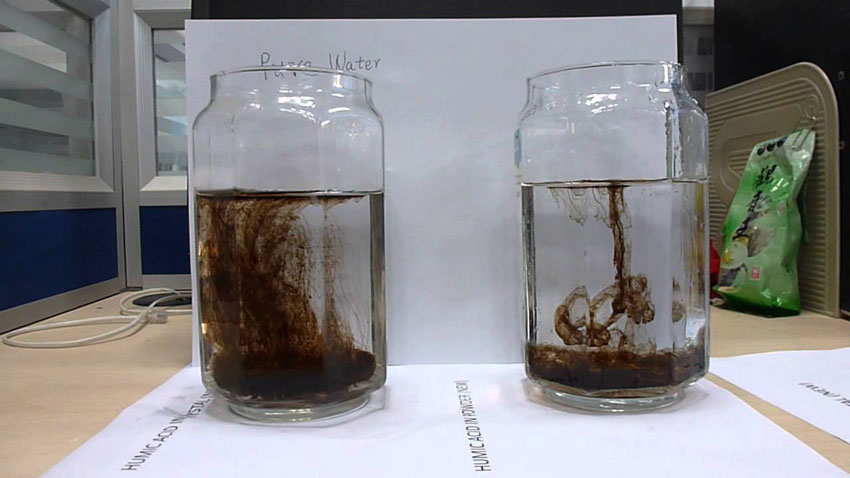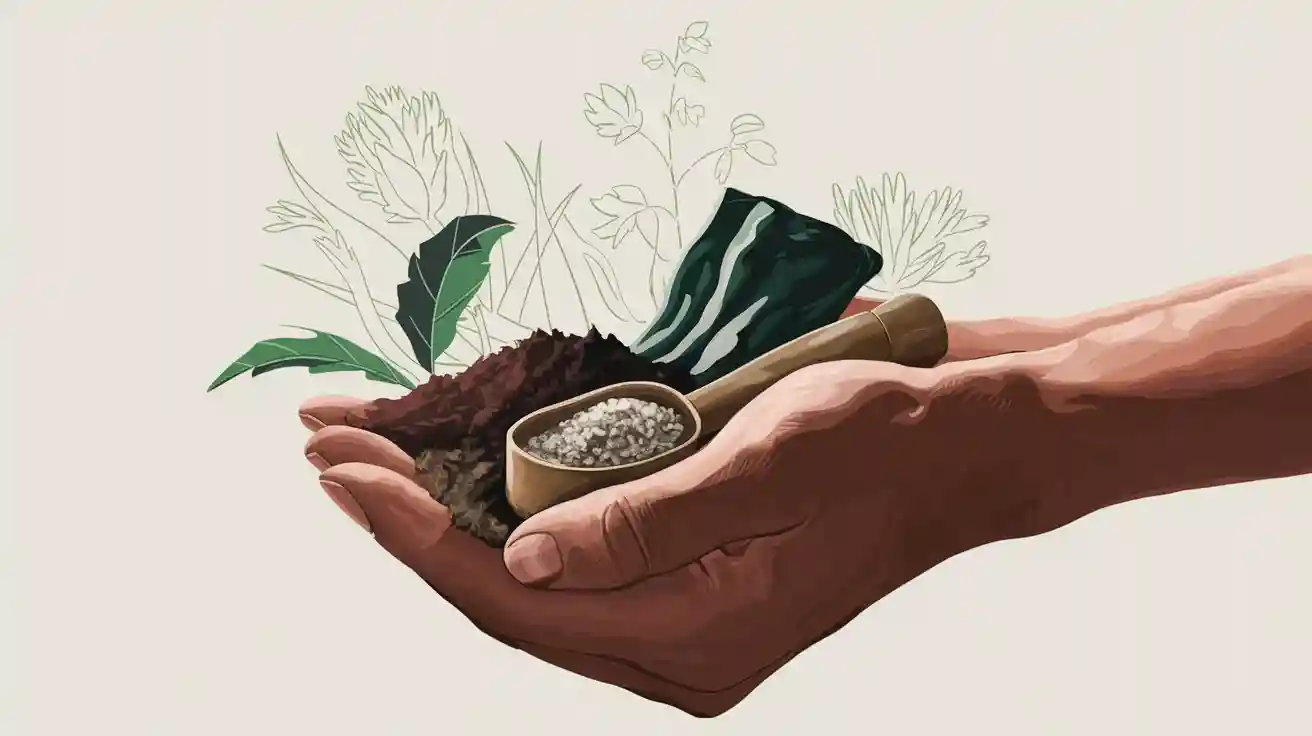
I have seen how integrating granular npk fertilizers, seaweed products, and humic or fulvic acids transforms my approach to sustainable agriculture. Npk supplies essential nutrients that support strong plant growth. When I add seaweed products and humic acids, the soil becomes healthier and holds nutrients better. These sustainable agriculture inputs boost crop productivity while protecting the soil for long-term sustainability. I notice improved soil structure and nutrient cycling, which leads to higher yields and environmental sustainability. This sustainable system reduces waste, preserves soil, and supports sustainability at every level.
Sustainable practices give my crops resilience and help the soil thrive for years.
Key Takeaways
- Granular NPK fertilizers provide essential nutrients that support strong plant growth and improve crop yields.
- Seaweed products add natural plant hormones and trace minerals that boost root growth and help plants resist stress.
- Humic and fulvic acids improve soil structure, increase nutrient uptake, and promote healthy root development.
- Combining NPK, seaweed, and humic acids creates a powerful synergy that enhances nutrient availability and soil health.
- Regular soil testing guides precise fertilizer use, prevents nutrient waste, and protects the environment.
- Applying fertilizers using the right methods and timing increases efficiency and reduces chemical runoff.
- Sustainable farming with these inputs reduces chemical use, restores soil health, and supports biodiversity.
- Careful product selection, safe handling, and record keeping help maintain farm productivity and environmental safety.
Sustainable Agriculture Inputs
I rely on sustainable agriculture inputs to improve my farm’s productivity and protect the environment. These inputs include granular npk fertilizers, seaweed as organic fertilizer, and humic and fulvic acids. Each one plays a unique role in supporting soil health, fertility, and crop growth. When I combine these tools, I see stronger plants, better yields, and healthier soil.
Granular NPK Fertilizers
Granular npk fertilizers form the backbone of my plant nutrition strategy. They deliver three essential nutrients: nitrogen (N), phosphorus (P), and potassium (K). These nutrients support every stage of plant growth and development.
Nutrient Roles
Nitrogen helps my crops grow leaves and stems. Phosphorus supports root development and energy transfer. Potassium strengthens plant cells and improves resistance to stress. I use granular npk fertilizers to ensure my crops get balanced nutrition. Studies from the Federal University of Agriculture Umuahia show that npk increases crop yield significantly when compared to unfertilized fields. This direct impact on yield makes granular npk fertilizers a key part of my sustainable agriculture inputs.
Types and Blends
I choose from many types of npk fertilizers, each with different nutrient ratios. Some blends focus on early growth, while others support flowering or fruiting. The types of npk fertilizers I use depend on my crop’s needs and the stage of growth. By selecting the right types of npk fertilizers, I can boost soil fertility and reduce waste. This approach helps me use resources efficiently and maintain soil health.
I have found that using the right types of npk fertilizers can increase fertilizer efficiency by up to 14%, reduce herbicide use by 9%, and save up to 21% in water usage.
| Sustainable Agriculture Input Metric | Quantitative Benefit / Potential Gain |
|---|---|
| Fertilizer Use Reduction | 14% additional efficiency gain possible |
| Herbicide and Pesticide Use Reduction | 9% gain realized; additional 15% gain possible |
| Water Usage Savings | Up to 21% reduction potential |
| Fossil Fuel Usage Reduction | 16% reduction potential |
| CO2 Emissions Avoided | 10.1 million metric tons currently avoided; 17.3 million metric tons possible with broader adoption |
Seaweed as Organic Fertilizer
I use seaweed as organic fertilizer to add natural plant hormones and trace minerals to my soil. This input supports soil fertility and plant health in ways that synthetic fertilizers cannot.
Plant Hormones
Seaweed contains auxins, cytokinins, and gibberellins. These plant hormones stimulate root growth, improve stress tolerance, and help my crops recover from harsh conditions. The key benefits of seaweed include better root systems and stronger plants.
Trace Minerals
Seaweed provides a wide range of trace minerals that support soil fertility and plant nutrition. These minerals improve soil health and help crops absorb nutrients more efficiently. Field studies show that seaweed as organic fertilizer can increase crop yield by over 15%, boost vitamin C by 18%, and improve root weight by nearly 48%.

Humic and Fulvic Acids
Humic and fulvic acids are vital for building soil structure and improving nutrient uptake. I add these sustainable agriculture inputs to my soil to enhance fertility and long-term productivity.
Soil Structure
Humic and fulvic acids bind minerals and improve soil aggregation. This process increases water holding capacity, boosts aeration, and prevents compaction. My soil becomes more resilient and supports healthy root growth. These acids also promote beneficial microbes, which further improve soil fertility.
Nutrient Uptake
I notice that humic and fulvic acids help my crops absorb nutrients more efficiently. They deliver minerals directly to plant roots and stimulate root development. Scientific reviews confirm that these acids regulate plant metabolism, increase nutrient uptake, and support strong growth. By using humic and fulvic acids, I reduce my reliance on chemical fertilizers and maintain soil health for future seasons.
The Sustainable Agriculture Matrix shows that these sustainable agriculture inputs drive measurable improvements in soil fertility, resource efficiency, and environmental stewardship.
Synergy in Sustainable Agriculture
When I combine granular npk fertilizers, seaweed products, and humic and fulvic acids, I see results that go far beyond what each input can achieve alone. This integrated approach creates a powerful synergy that boosts nutrient availability, improves soil health, and increases crop resilience. I have learned that using these tools together supports both immediate crop productivity and long-term sustainability.
Enhanced Nutrient Availability
I notice that integrating npk, seaweed, and humic and fulvic acids makes nutrients more available to my crops. Each input plays a unique role in nutrient cycling. Npk delivers essential macronutrients directly to the soil. Seaweed adds trace minerals and natural growth stimulants. Humic and fulvic acids help bind nutrients and make them easier for roots to absorb. This combination reduces nutrient losses and increases efficiency.
- Nitrate loadings in drainage waters dropped by up to 80% in integrated systems compared to conventional tillage.
- Organic farming systems showed nitrate leaching rates about two-thirds lower than conventional systems.
- Nitrogen use efficiency reached about 34% in organic systems, matching conventional farms on similar soils.
- Minimum tillage in integrated systems cut autumn and winter nitrate concentrations by 25–50%, which helped prevent soil erosion.
- Precision nitrogen measurements and split fertilizer applications improved nutrient uptake and reduced losses.
A long-term study in Germany tracked nutrient inputs and outputs across many farms. The research measured nitrogen, phosphorus, and potassium from mineral and organic sources, including manure and biological nitrogen fixation. The data showed that integrated systems improved nutrient cycling and reduced losses, which led to better soil fertility and higher nutrient availability for crops.
Improved Soil Health
Healthy soil is the foundation of regenerative farming. By combining npk, seaweed, and humic and fulvic acids, I create an environment where soil life thrives. Npk supports immediate plant needs, while seaweed and humic substances build soil structure and encourage beneficial microbes. This approach leads to visible improvements in soil health and fertility.
| Parameter | Numerical Improvement | Context/Details |
|---|---|---|
| Snow mould incidence | 8% reduction | At highest dose (3.0 L ha−1) of amino acid-humic acid biostimulant |
| Brown spot prevalence | 12% reduction | At highest dose (3.0 L ha−1) of amino acid-humic acid biostimulant |
| NDVI (Normalized Difference Vegetation Index) | 6% increase | Indicates improved greenness and photosynthetic activity |
| SPAD values (chlorophyll content) | 8% increase | Reflects enhanced chlorophyll content and plant vitality |
| Plant height | Increased | Observed in pot experiments combining humic acid and amino acids |
| Cover index (%) | Increased | Improved plant coverage in pot experiments |
| Number of plants per pot | Increased | Demonstrated in controlled pot trials |
| Fresh and dry green matter | Increased | Indicates biomass improvement |
| Nutrient assimilation (N, Fe) | Enhanced uptake | Demonstrated improved macro- and micronutrient assimilation with biostimulant application |
| Optimal humic acid concentration | 10 ml/L with 2 g/pot amino acids | Combination yielded highest mean values in growth and chemical composition |
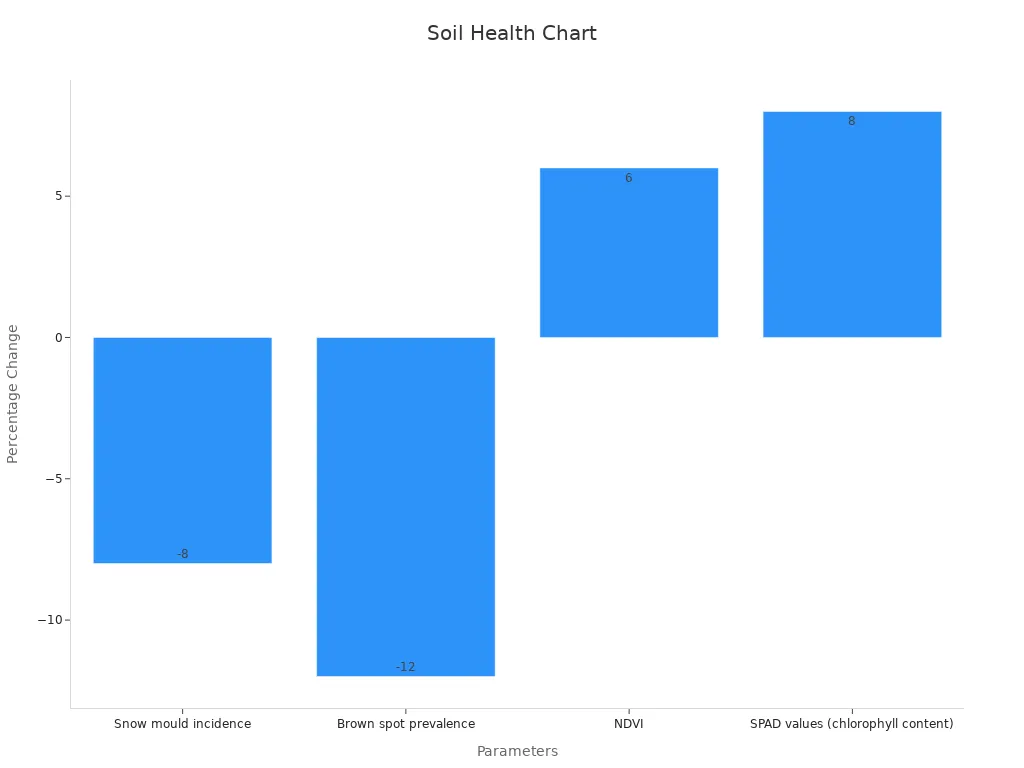
I see these improvements in my own fields. The soil holds water better, resists compaction, and supports more vigorous root systems. My crops show higher chlorophyll content and greener leaves. These changes reflect real soil health improvement and greater soil fertility, which are key for sustainable agriculture.
Crop Resilience
I want my crops to withstand drought, heat, and other stresses. Integrating npk, seaweed, and humic and fulvic acids helps me achieve this goal. Seaweed provides natural plant hormones that boost stress tolerance. Humic and fulvic acids support a diverse soil microbiome, which acts as a protective shield for plants. Npk ensures that crops have the nutrients they need to recover quickly from stress.
Recent research shows that the plant and soil microbiome play a critical role in crop resilience. By supporting a healthy soil ecosystem, I help my crops adapt to drought, heat, flooding, and salinity. Advances in microbiome science reveal that a diverse microbial community acts as an extended genome for the plant, improving its ability to survive changing conditions.
Studies also show that crop diversification and adaptation strategies increase resilience. When I use integrated inputs and adjust my crop choices, I see more stable yields even during extreme weather. This approach supports both regenerative and sustainable farming, helping me maintain high yield and long-term productivity.
By integrating npk, seaweed, and humic and fulvic acids, I build a regenerative system that supports healthy soil, strong crops, and lasting sustainability.
Application Methods
Soil Testing
I always start my sustainable farming plan with soil testing. This step gives me a clear picture of the nutrient levels and pH in my fields. Soil testing helps me identify both deficiencies and excesses, so I can avoid wasting resources. I use the results to decide which types of npk fertilizers and other amendments my crops need.
Soil testing does more than just guide fertilizer use. It also helps me prevent nutrient runoff, which can harm nearby water sources. Studies show that soil testing can reduce fertilizer runoff by up to 45%. I have seen that regular soil testing improves crop yields, strengthens root systems, and increases stress resistance. When I combine soil testing with plant tissue analysis, I make better decisions about nutrient management.
Routine soil testing gives me baseline information for cost-effective fertilization. It helps me spot pH imbalances that could limit nutrient uptake, even if the nutrients are present. By testing my soil before each planting season, I set my crops up for success and support environmental sustainability.
Tip: I always test my soil at least once a year, before the main planting season. This habit helps me adjust my fertilization plan and avoid unnecessary applications.
Granular NPK Application
After soil testing, I choose the right granular npk fertilizers for my crops. I look at the test results to match the nutrient ratios to my soil’s needs. Using the correct types of npk fertilizers is essential for balanced nutrition and healthy plant growth.
I apply granular npk fertilizers in several ways. Sometimes I broadcast them evenly across the field. Other times, I use banding, placing the fertilizer close to the seed or root zone. This method increases nutrient use efficiency and reduces losses. I also practice split applications, dividing the total amount into two or more doses during the growing season. This approach matches nutrient supply with crop demand and prevents overapplication.
Research from India and Europe confirms that balanced application of npk, especially with the right timing and rates, leads to higher yields and better soil fertility. For example, long-term experiments in Prague show that stable wheat yields come from applying about 47 kg N/ha, 54 kg P/ha, and 108 kg K/ha each year. In rice systems, balanced rates like 80:40:40 kg/ha for N:P:K maintain soil health and maximize growth. Deep tillage combined with rotary tillage can also improve mineral nitrogen availability, boosting yields.
I always select custom granular npk blends based on my crop’s stage and the soil test results. This practice helps me avoid nutrient imbalances and supports sustainable farming.
Note: I avoid applying granular npk fertilizers right before heavy rain. This prevents nutrient runoff and protects the environment.
Here is a summary of experimental application practices for granular npk fertilizers and related amendments:
| Aspect | Details |
|---|---|
| Crop | Okra, Maize, Zucchini, Cucumber, Broad bean |
| Locations | India, Iraq, Jordan |
| Application Methods | Field application, foliar spray, irrigation water, split applications |
| Application Rates | Vary by crop and product (e.g., 0.5–1.5 mL/L for humic/fulvic acids, 10–30 L/ha for foliar) |
| Key Findings | Balanced and split applications improve yield, quality, and nutrient uptake |
Seaweed Application
I use seaweed products as a natural way to boost plant health and resilience. Seaweed contains plant hormones and trace minerals that synthetic fertilizers cannot provide. I apply seaweed as a foliar spray or add it to irrigation water, depending on the crop and growth stage.
Seaweed application improves root development, increases chlorophyll content, and helps plants tolerate stress. Research shows that seaweed extracts trigger plant defense responses, making crops more resistant to diseases and pests. I have seen fewer symptoms of viral and fungal infections in my fields after using seaweed products. Seaweed also helps my crops handle drought, salinity, and temperature extremes by improving water retention and reducing oxidative damage.
I often combine seaweed with humic and fulvic acids for even better results. Experiments on okra in India used mixtures of seaweed and humic acid, applied in the field at recommended doses. The standard check treatment, which included both, gave the highest yield and quality. Multiple applications during the season improved results further.
Here is a table summarizing practical application practices for seaweed and humic acid mixtures:
| Aspect | Details |
|---|---|
| Crop | Okra (Abelmoschus esculentus) |
| Location | LPU, Phagwara, India |
| Experimental Design | Randomized Block Design with 5 treatments and 5 replications |
| Treatments | Humic acid and seaweed extract mixtures (BP-100 and IFFCO Sea Secret) |
| Application Method | Field application as per recommended doses |
| Measured Parameters | Germination %, plant height, leaves, branches, flowers, fruit yield, quality traits |
| Key Findings | Seaweed + humic acid gave highest yield and quality; multiple applications improved results |
I always follow the product label for timing and dosage. For most crops, I apply seaweed every two to three weeks during active growth. I avoid spraying during the hottest part of the day to prevent leaf burn.
Tip: I rotate seaweed products with other organic amendments to keep my soil and crops healthy throughout the season.
Humic/Fulvic Acid Application
I always include humic and fulvic acids in my sustainable farming routine because they transform the way my crops use nutrients. When I apply these substances, I see stronger root systems, better nutrient absorption, and healthier plants. I usually add humic and fulvic acids to my soil as a liquid drench, a granular amendment, or through fertigation systems. Each method has its own advantages, but I choose based on my crop type, soil condition, and the stage of growth.
I often mix humic and fulvic acids with npk fertilizers. This combination helps my crops absorb more nitrogen, phosphorus, and potassium. I notice that when I blend these acids with npk, my plants grow taller, develop longer roots, and produce more grain. The soil structure improves, which means better water retention and less compaction. I also see higher chlorophyll content in the leaves, which tells me my plants are photosynthesizing efficiently.
Here is how I approach humic and fulvic acid application on my farm:
- Soil Drench: I dilute the product in water and apply it directly to the soil around the roots. This method works well for vegetables and fruit trees.
- Granular Application: I spread granules evenly over the soil surface before planting or during early growth. This approach is effective for broad-acre crops.
- Fertigation: I inject humic and fulvic acids into my irrigation system. This ensures even distribution and works best for row crops and high-value vegetables.
I always check the compatibility of humic and fulvic acids with my npk blends. Some products mix easily, while others require separate applications. I read the labels and follow manufacturer recommendations to avoid any issues.
Tip: I apply humic and fulvic acids early in the season to boost root development and nutrient uptake. I repeat applications during key growth stages, such as flowering and fruit set, for maximum benefit.
I track the effectiveness of my application methods by measuring several plant and soil parameters. I look at grain weight, total yield, protein and carbohydrate content, chlorophyll levels, and root length. I also monitor soil moisture and structure. These metrics help me see how well my crops use npk and how the soil responds to humic and fulvic acids. I have found that regular use of these acids increases nutrient uptake, improves plant height, and boosts overall yield.
I also pay attention to the chemical structure of the humic and fulvic acids I use. Products with better hydrophilicity improve nutrient uptake and plant growth. I sometimes use laboratory tests to check the quality of my amendments, especially if I notice changes in crop performance.
When I integrate humic and fulvic acids with npk and seaweed, I create a balanced system. The soil becomes more fertile, the plants grow stronger, and I see fewer problems with disease or stress. This approach supports sustainable farming and helps me maintain high productivity year after year.
Environmental Impact of Sustainable Agriculture
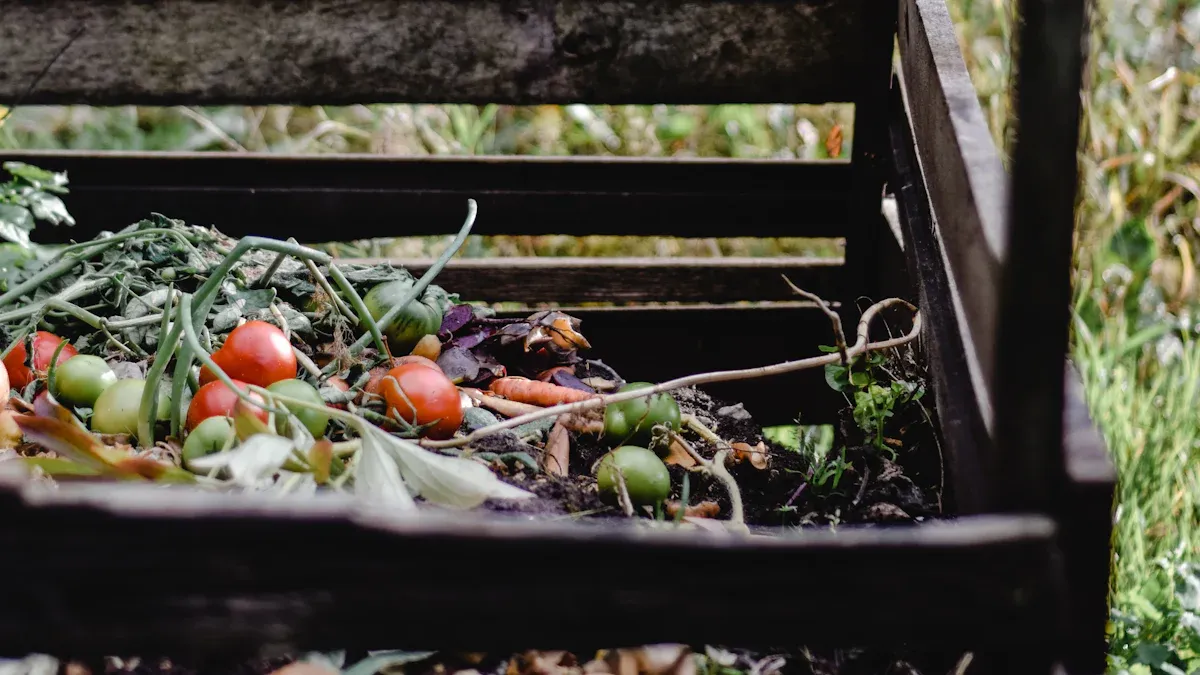
Reduced Chemical Use
When I integrate npk fertilizers with seaweed and humic acids, I see a clear reduction in chemical use on my farm. I rely less on synthetic pesticides and fertilizers because these sustainable inputs improve soil health and plant resilience. I notice that my crops need fewer chemical treatments for pests and diseases. This shift supports environmental sustainability and protects the environment from pollution.
- Agricultural Social Services (ASS) in China show that using technology, equipment, and unified pest control helps farmers reduce pesticide use.
- Standardized and precise application methods improve efficiency and prevent overuse of chemicals.
- Farmers who join cooperatives or use mechanized pest control see even greater reductions in chemical inputs.
- These practices encourage a green mindset and demonstrate the benefits of reducing chemicals to other farmers.
By using npk, seaweed, and humic acids together, I move closer to chemical-free crop nutrition. This approach keeps my soil healthy and reduces the risk of chemical runoff into the environment. I also find that my crops grow stronger and more resilient, which means I can use fewer chemical products over time.
Soil Restoration
I focus on soil restoration as a key part of my sustainable and regenerative farming strategy. When I combine npk with organic amendments like seaweed and humic acids, I help rebuild soil structure and increase organic matter. This process improves soil health and supports long-term sustainability for my farm.
- Studies show that combining cover crops with no-tillage practices increases soil carbon sequestration more than using either practice alone.
- Animal integration in perennial systems, such as vineyards, leads to higher soil organic carbon, especially when using animal manure.
- Double cover cropping with both legumes and non-legumes boosts soil carbon even more in arable land.
- All regenerative practices studied contribute to higher soil carbon, which is a key sign of soil restoration.
I see the results in my fields. The soil holds water better, resists erosion, and supports healthy root systems. These changes make my farm more resilient to drought and extreme weather. By focusing on soil restoration, I protect the environment and ensure my farm’s productivity for years to come.
Biodiversity Support
I believe that supporting biodiversity is one of the greatest environmental benefits of sustainable agriculture. When I use npk, seaweed, and humic acids in combination, I create a balanced environment where many species can thrive. I see more birds, insects, and beneficial organisms in my fields, which helps control pests naturally and improves crop pollination.
- Farms that use agroecological practices suffer less damage from natural disasters and support more biodiversity than conventional farms.
- Conservation tillage and strip cover cropping increase bird and arthropod populations by up to 20 times compared to traditional methods.
- Organic farming and diversified systems boost species richness across birds, mammals, invertebrates, and plants.
- Combining crop and animal production or using multiple diversification methods leads to win-win outcomes for both biodiversity and yield.
- Studies show that landscape diversity and farmer motivation also play important roles in enhancing species richness.
By creating a diverse and healthy environment, I help maintain balance in the ecosystem. This approach supports regenerative farming and ensures that my soil and crops remain productive. I see firsthand how sustainable practices benefit both my farm and the wider environment.
Sustainable agriculture not only improves my yields but also protects the environment, restores soil, and supports biodiversity for future generations.
Troubleshooting and Best Practices
Nutrient Imbalances
I often face nutrient imbalances when I do not match npk application to my crop’s needs or my soil’s condition. If I apply too much or too little npk, my crops show signs like yellowing leaves, stunted growth, or poor yields. I learned that every crop removes specific amounts of nutrients from the soil, especially when I harvest grain or vegetables. If I do not replace these nutrients, my soil loses fertility over time.
Here is a table that shows how much nitrogen, phosphorus, and potassium maize crops remove from the soil at different yield levels:
| Study | Target Yield (t/ha) | N Uptake (kg/ha) | P Uptake (kg/ha) | K Uptake (kg/ha) |
|---|---|---|---|---|
| Falconnier et al. (2018) | 5.4 | 105 | 13 | 70 |
| Falconnier et al. (2023) TZ | 3.5 | 68 | 9 | 45 |
| Falconnier et al. (2023) UG | 2.8 | 54 | 7 | 36 |
When I do not balance npk inputs with what my crops remove, I risk soil nutrient mining. I also know that organic inputs like manure help, but they cannot meet all crop needs, especially for phosphorus and potassium. I use precision agriculture tools, such as soil sensors and drones, to monitor nutrient levels and spot problems early. These technologies help me adjust npk rates before my crops suffer.
Tip: I always test my soil before each planting season and after harvest. This habit helps me keep npk levels balanced and avoid long-term soil depletion.
Over-Application
Sometimes I worry about using too much npk or other amendments. Over-application can harm my soil, waste money, and cause environmental problems like runoff or soil acidification. I have seen that low nitrogen use efficiency leads to poor results. For example, in some regions, farmers only get 14 kg of maize grain per kg of nitrogen applied, while the global average is 30 kg per kg. This gap shows that simply adding more npk does not guarantee better yields.
To avoid over-application, I follow these best practices:
- I use the 4R principles: right source, right rate, right time, and right place for all npk applications.
- I split my npk doses during the season instead of applying everything at once.
- I monitor my soil with sensors and adjust my plan based on real-time data.
- I keep records of every npk and amendment application, including rates and dates.
I also use integrated nutrient management, combining npk with organic matter and crop rotation. This approach improves soil health and reduces the risk of nutrient buildup or loss.
Note: Over-application of npk can increase greenhouse gas emissions and damage soil structure. I always aim for efficiency, not excess.
Seasonal Adjustments
Each season brings new challenges for my soil and crop nutrition. I adjust my npk and amendment rates based on temperature, rainfall, and crop growth stages. I track seasonal data like precipitation, daylight, and pest outbreaks to fine-tune my input strategy.
Here is how I manage seasonal adjustments:
- I keep detailed records of all npk and soil amendment applications using standard operating procedures.
- I review my records every week and month to spot trends and missing information.
- I use real-time monitoring tools to check soil moisture, nutrient levels, and crop health.
- I adjust npk rates as my crops move from early growth to flowering and harvest.
- I plan my crop cycles and input use based on past results and current weather patterns.
- I update my strategy each year to improve soil health and farm resilience.
By following this process, I make sure my npk applications match my soil’s needs throughout the year. This approach helps me avoid both shortages and excesses, keeping my soil productive and my yields strong.
Callout: Continuous improvement and careful record keeping help me adapt my npk and soil management to every season, making my farm more sustainable and profitable.
Product Selection and Sourcing
Choosing the right products for my farm makes a big difference in both crop performance and environmental impact. I always look for high-quality, certified, and sustainable options when sourcing npk fertilizers, seaweed products, and humic acids. This approach helps me protect my soil, improve yields, and build trust with buyers.
Quality Standards
When I select npk and other inputs, I check for industry-accepted quality standards. Many studies compare certification schemes like Fairtrade, Organic, UTZ, and Rainforest Alliance. These standards focus on social, economic, and environmental impacts. I have seen that products meeting these benchmarks support better farming practices and healthier soil.
- I look for products that meet national and international frameworks, such as the US National Organic Program or EU Organic Farming Regulations.
- Eco-labels like Fairtrade and Rainforest Alliance assure me that the npk or seaweed I buy comes from responsible sources.
- Independent third-party verification gives me confidence in product claims.
- These standards also educate me and protect my buyers by setting clear expectations for quality and safety.
I use technology platforms that offer traceability and real-time data sharing. This makes it easier for me to track my npk and other amendments from source to field. It also helps me comply with documentation requirements, especially when I want to access premium markets.
Tip: I always ask my supplier for documentation showing compliance with recognized quality standards before I purchase any npk or soil amendment.
Certification
Certification plays a key role in my product selection process. Recognized certifications like USDA Organic, GlobalG.A.P., Rainforest Alliance, and Fair Trade set benchmarks for sustainability, food safety, and traceability. These certifications help me build trust with buyers and open new market opportunities.
- Certifications ensure my npk and other products meet strict environmental and social criteria.
- They make it easier for me to comply with regulations and gain access to premium buyers.
- Certification programs often support smallholder farmers by providing training and reducing paperwork through digital tools.
- I have noticed that certified farms often show measurable ecological benefits, such as more bird species and beneficial insects in the fields.
- Certified products usually command higher prices, which helps me invest back into my farm and soil health.
Certification also creates transparency. I can show my buyers exactly how I manage my npk, seaweed, and humic acids, and how I protect my soil and community. This transparency builds trust and supports long-term business relationships.
Safe Handling
Safe handling of npk and other agricultural inputs protects my health, my workers, and the environment. I follow strict procedures for storage, application, and disposal.
- I store npk and other chemicals in secure, locked facilities. Only trained people have access.
- I use personal protective equipment (PPE) when handling npk, seaweed, or humic acids.
- I calibrate my equipment regularly to ensure precise application and avoid overuse.
- I follow waste management plans, recycling or safely disposing of empty containers and unused products.
- I alert my team and neighbors before applying any inputs, especially if I use products that could affect nearby communities.
I keep first aid kits and emergency plans ready in case of accidents. Regular training helps everyone on my farm understand the risks and proper procedures. By following these steps, I reduce the risk of pollution and keep my soil healthy for future crops.
Note: Safe handling is not just about following rules. It is about protecting my family, my workers, and the land that supports us all.
I have seen that integrating npk fertilizers, seaweed, and humic or fulvic acids transforms my approach to sustainable farming. Npk delivers essential nutrients, while seaweed and humic acids boost nutrient uptake, root growth, and crop resilience. When I tailor npk blends to my soil and crop needs, I improve yield stability and reduce input waste. Npk, combined with organic biostimulants, builds soil health, increases organic matter, and supports long-term productivity. I notice fewer nutrient losses and better environmental outcomes. I encourage every grower to adopt integrated npk strategies for healthier soil and lasting farm success.
FAQ
What is the best time to apply npk, seaweed, and humic acids?
I apply npk at planting or early growth. I use seaweed and humic acids during active growth or stress periods. Timing depends on the crop and soil test results. I always follow label instructions for each product.
Can I mix npk, seaweed, and humic acids together?
I often mix npk with seaweed and humic acids for better results. I check product labels for compatibility. Some blends work well together, but I avoid mixing if the manufacturer warns against it.
How do I know if my soil needs more npk?
I test my soil before planting. Soil tests show nutrient levels and help me decide if I need more npk. I look for signs like yellow leaves or slow growth, which may mean my crops need extra nutrients.
Will using npk, seaweed, and humic acids reduce my need for pesticides?
I notice that healthy soil and strong plants from npk, seaweed, and humic acids often need fewer pesticides. My crops resist pests and diseases better, so I use fewer chemicals over time.
How do I avoid over-applying npk?
I follow the 4R principles: right source, right rate, right time, and right place. I split npk applications and use soil tests to guide me. I keep records of every application to avoid mistakes.
Are organic crops compatible with npk, seaweed, and humic acids?
I use organic-certified npk, seaweed, and humic acids on my organic crops. I check for certification labels to make sure the products meet organic standards. This helps me keep my farm sustainable.
What are the signs of npk deficiency in plants?
I see yellowing leaves, weak stems, and poor root growth when my plants lack npk. Each nutrient shows different symptoms. Nitrogen deficiency causes pale leaves, phosphorus deficiency stunts growth, and potassium deficiency leads to brown leaf edges.
Can I use npk, seaweed, and humic acids on all crops?
I use npk, seaweed, and humic acids on vegetables, grains, and fruit trees. I adjust rates and timing for each crop. I always read product labels and follow expert advice for best results.



